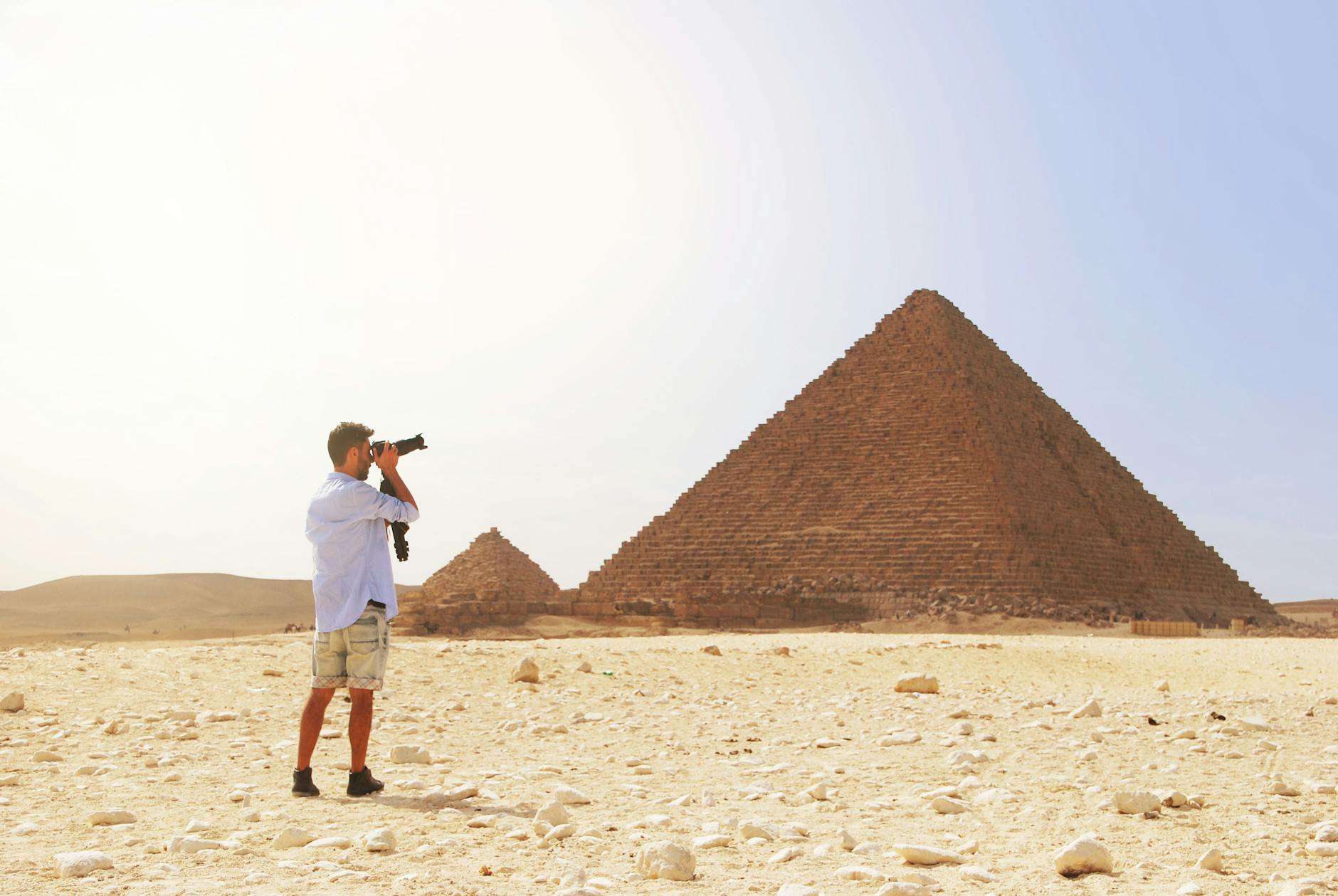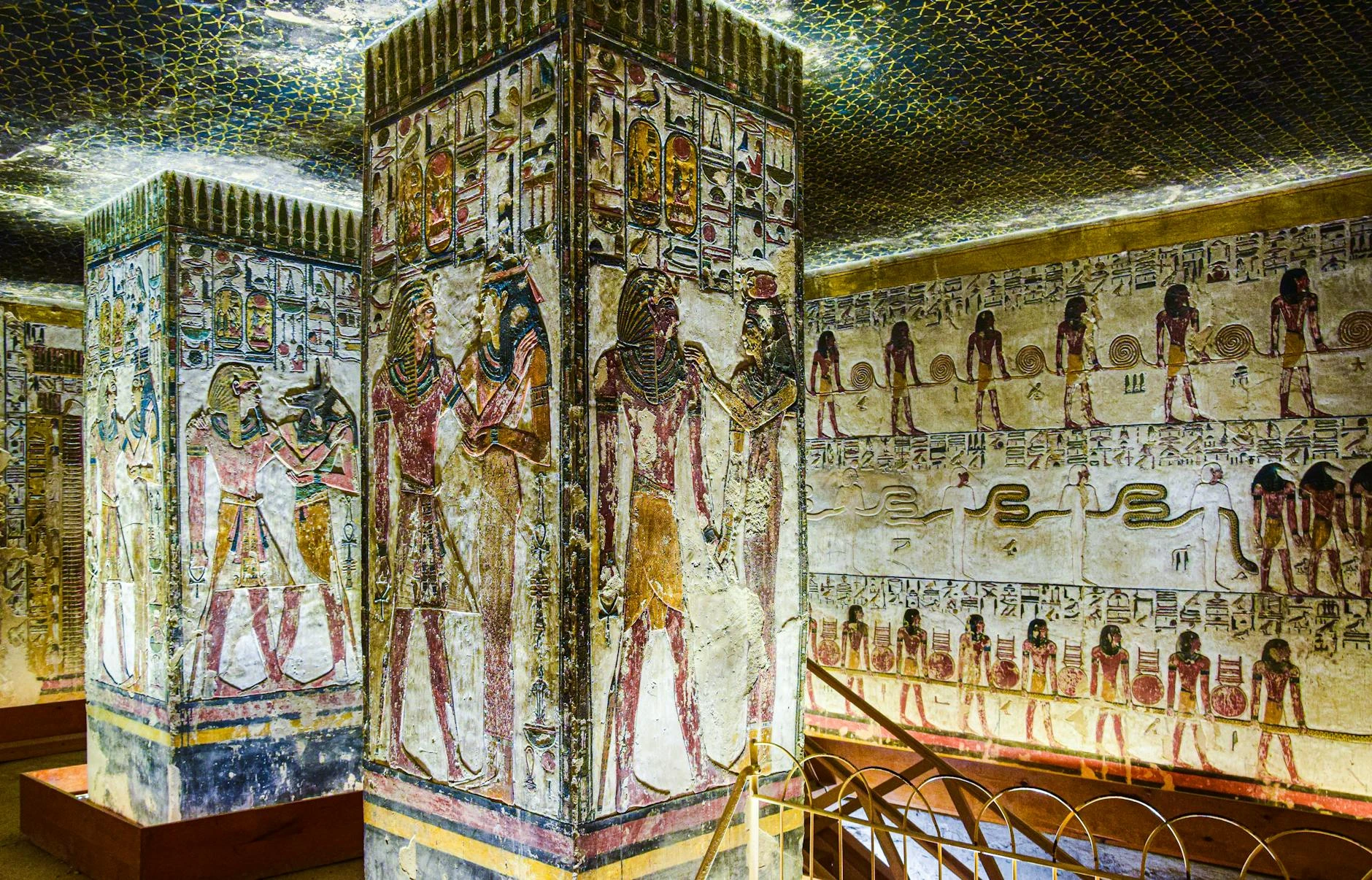Inside the Great Pyramid of Giza: Real Photos Reveal Its Hidden Chambers and Design
The Great Pyramid of Giza stands as one of the oldest and most impressive structures ever built. For thousands of years, it has drawn attention not just for its size but for the mysteries hidden inside its stone walls. Despite many studies, the interior of the pyramid remains a place full of secrets waiting to be seen.
This post will show authentic photos of the pyramid’s inside, revealing its chambers, corridors, and design. These images let us take a rare look into spaces that few have explored firsthand. By sharing actual views from inside, you’ll get a clearer picture of this ancient marvel beyond the usual myths and stories.
Architectural Layout of the Great Pyramid Interior
The interior of the Great Pyramid is a masterclass in ancient engineering and design. Its layout combines practical needs with symbolic meaning, guiding visitors through a series of corridors and chambers crafted with precision. Each part holds clues about its builders' intentions and the pyramid’s purpose as a royal tomb. Let’s take a closer look inside and explore the key sections that make up this fascinating structure.
The Descending Passage and Subterranean Chamber
The journey inside begins with a steep descending passage that cuts through the pyramid’s core. This narrow corridor slopes downward for about 345 feet (105 meters) and leads to one of the pyramid’s most mysterious spaces—an unfinished subterranean chamber carved directly into bedrock.
This chamber feels raw and incomplete compared to the rest of the pyramid. Its rough walls and cramped space suggest it was either abandoned or repurposed during construction. Some experts believe it was an original burial chamber plan later changed, while others see it as a symbolic "underworld" space representing the journey to the afterlife.
The descending passage itself shows remarkable craftsmanship. Its smooth limestone walls echo the care taken in shaping the pyramid’s inner paths. The angle and size of this passage were likely calculated to align with specific celestial or ritualistic needs, though its exact meaning is still debated.
The Ascending Passage and Grand Gallery
Alongside the descending corridor, the pyramid features an ascending passage leading upward to more impressive structures. This passage rises sharply through the pyramid’s interior, connecting to the famous Grand Gallery—a stunning architectural feature that continues to captivate visitors and scholars alike.
The Grand Gallery is a tall, narrow corridor over 150 feet long with a corbelled ceiling that steps inward, creating a towering, trapezoid-shaped space. Its walls are meticulously cut from huge limestone blocks, fitted without mortar, showcasing incredible precision. The gallery’s height and shape likely served a structural purpose, helping to distribute weight from the chambers above.
Aside from its engineering feat, the Grand Gallery may have had a ceremonial role. The sense of grandeur walking through this space is undeniable—its scale and design feel intentional, drawing attention upward toward the inner chambers.

The King's Chamber and Its Features
At the top of the Grand Gallery lies the King's Chamber, the pyramid’s primary burial room. This chamber embodies simplicity paired with grandeur. It’s built mostly of red granite, a stone imported from quarries miles away, emphasizing its importance.
Inside, massive granite blocks line the walls and ceiling. These blocks weigh many tons and were carefully placed to form a flat, smooth interior. Over the chamber sits a series of five huge granite slabs known as the “relieving chambers.” Their purpose is to take the weight off the ceiling, preventing collapse.
At the room’s center sits a large granite sarcophagus, though no mummy was ever found inside. The chamber is void of elaborate decorations or hieroglyphs, which some argue relates to its sacred function—quiet, solemn, and secure.
The Queen's Chamber and Air Shafts
Below the King’s Chamber is the Queen's Chamber, smaller and less grand but equally intriguing. Contrary to its name, it likely was not used for a queen’s burial. Its purpose remains uncertain, with theories ranging from a symbolic chamber to a storage room.
This chamber is notable for two narrow air shafts carved into its walls. These shafts are angled and extend outside the pyramid. Initially thought to be ventilation ducts, their precise alignment with certain stars has led to speculation about ritual or astronomical purposes.
Unlike the King's Chamber, the Queen's Chamber is made mainly of limestone. The shafts themselves are tight and difficult to pass through, further fueling curiosity about their function.
Together, the Queen’s Chamber and its shafts add another layer of mystery to the pyramid’s interior design, showing how practical and symbolic ideas were often intertwined.
This layout shows the care and skill used in the Great Pyramid’s design. It’s a blend of practical pathways, sacred spaces, and symbolic architecture—all carved from stone thousands of years ago. Exploring these spaces with real images helps us appreciate the complexity hidden behind the pyramid's silent exterior.
Archaeological Discoveries and Modern Imaging Inside the Pyramid
Exploring the Great Pyramid of Giza has long been a challenge due to its complex interior and restricted access. Today, modern technology is breaking down these barriers, allowing researchers to uncover secrets hidden deep within the ancient stones. From tiny drones slipping through tight shafts to advanced imaging techniques revealing unseen chambers, these innovations are opening a fresh window into the pyramid’s inner world.
Use of Robotics and Drones for Interior Exploration
Robots and drones have transformed how we study the pyramid's interior, often accessing spaces no human can reach safely. These small, agile machines are equipped with cameras and sensors that capture detailed images and map hidden passageways.
Some drones fly through narrow air shafts, bringing back the first-ever photographs of sealed-off chambers. For example, tiny robots have explored the narrow shafts off the Queen’s Chamber, revealing smooth walls and construction details unseen before. These missions not only provide valuable data but also protect the fragile structure by reducing human intervention.
This approach solves a big problem: how to study fragile or dangerous areas without damaging them or risking explorers’ safety.
Muon Radiography and Hidden Chambers
Muon radiography is a method that uses cosmic particles, called muons, which naturally pass through rock and stone. By detecting how many muons are absorbed or blocked, scientists can create images of what lies inside a structure like the Great Pyramid.
This technique uncovered a large anomaly—a previously unknown “void” above the Grand Gallery. This hidden space has sparked excitement because it may lead to undiscovered chambers or corridors. This non-invasive approach allows researchers to peer inside without digging or drilling.
Muon imaging is a powerful tool because it helps scientists verify old theories and spot new features without disturbing the monument’s integrity.

3D Imaging and Virtual Reconstructions
Thanks to advances in 3D imaging, researchers now create detailed digital models of the pyramid's interior. These models combine data collected by lasers, drones, and cameras, producing a virtual tour of the pyramid’s inner spaces.
These reconstructions are incredibly useful. Scholars can study architectural details, measure chambers, and plan new explorations without physically entering the structures. They also offer an immersive experience for the public, letting anyone step inside the pyramid from afar.
3D models help preserve the site by minimizing physical visits, reducing wear on the ancient stone. They also bring the pyramid’s secrets to life with visuals that show how the chambers and corridors fit together, layer by layer.
Together, these technologies are helping us understand the Great Pyramid better than ever before—and on a scale no previous generation imagined possible.
Cultural and Historical Insights from Inside the Great Pyramid
The inside of the Great Pyramid of Giza offers more than just architectural wonder; it reveals a window into ancient Egypt’s culture, beliefs, and craftsmanship. Every inscription, stone placement, and passageway tells a part of a story that helps us understand their worldview and the significance they placed on the afterlife. Exploring these cultural and historical details inside the chambers brings the pyramid’s silent walls to life, connecting us to the people who built this incredible monument thousands of years ago.
Inscriptions, Symbols, and Artifacts Inside the Chambers
Stepping inside the pyramid, you won’t find many decorative paintings or statues like those in other Egyptian tombs. However, key inscriptions and symbols appear subtly throughout the interior, especially in lesser-known chambers and passages. The hieroglyphs, often carved directly into stone walls or on scattered fragments, hold valuable clues about the pyramid’s purpose and the beliefs of its builders.
Most inscriptions include primer texts designed to protect the pharaoh in the afterlife, ensuring his safe journey through the underworld. You might spot symbols like the Eye of Horus, ankh (symbol of life), and depictions of gods overseeing the passage of the spirit. These markings were not just decorative; they acted as spiritual safeguards.
Additionally, some artifacts found near the chambers—like pottery shards, tools, or small offerings—suggest rituals performed during construction or burial ceremonies. Though limited, these finds connect the pyramid to religious practice and royal burial customs, showing a blend of utility and faith.
Engineering Mastery Reflected in Interior Design
The interior layout shines with signs of remarkable engineering skill. Builders clearly understood how to distribute massive weight, control air flow, and create precise alignments that many still study today.
Here are some standout features that showcase their expertise:
- Weight distribution: The relieving chambers above the King’s Chamber are an early example of structural innovation. These overlapping granite blocks spread the massive stone weight to protect the chamber’s ceiling from collapse.
- Ventilation systems: Narrow shafts in the Queen’s and King’s Chambers function not only as symbolic pathways aligned with specific stars but probably helped circulate air, keeping the chambers dry.
- Precision cutting and fitting: Inside passages and galleries, limestone blocks fit tightly without mortar, showcasing fine craftsmanship that holds the pyramid solid without gaps.
This careful balance between symbolic design and practical engineering reveals how Egyptian builders combined architecture and function seamlessly.
The Pyramid’s Role in Egyptian Cosmology and Afterlife Beliefs
The Great Pyramid's interior isn’t just a tomb; it’s a physical map reflecting ancient Egyptian beliefs about life, death, and the cosmos. The layout seems designed to guide the pharaoh’s spirit through a celestial journey.
Many scholars connect the pyramid’s chambers and shafts with important spiritual ideas:
- The King’s Chamber represents the heart of the pyramid’s sacred space, where the pharaoh’s body awaited rebirth.
- The narrow shafts align with stars like Sirius and Orion, associated with gods linked to resurrection and guidance in the afterlife.
- The underground chamber may mirror the Egyptian underworld, symbolizing the death phase before the soul’s transformation.
This spiritual symbolism makes the pyramid more than a resting place; it is a three-dimensional representation of Egyptian cosmology and the belief in a carefully planned journey after death.

Conclusion
The interior of the Great Pyramid reveals a careful blend of engineering skill and symbolic meaning. From the narrow passages to the grand chambers, each space tells part of the story behind this ancient structure. Modern images and technology have opened new doors, showing hidden areas and challenging old ideas.
Despite all we’ve learned, questions remain about the pyramid’s full design and purpose. Future explorations promise to uncover more secrets and deepen our understanding. The Great Pyramid continues to inspire curiosity and respect, standing as a lasting link to a remarkable past.
Thank you for joining this journey inside the stone walls. Feel free to share your thoughts or what fascinates you most about this ancient wonder.











